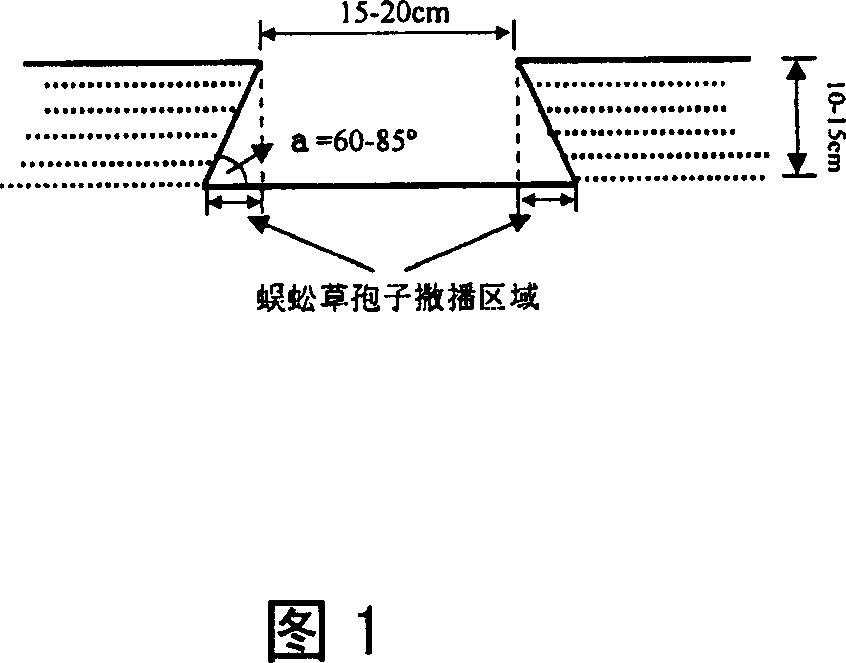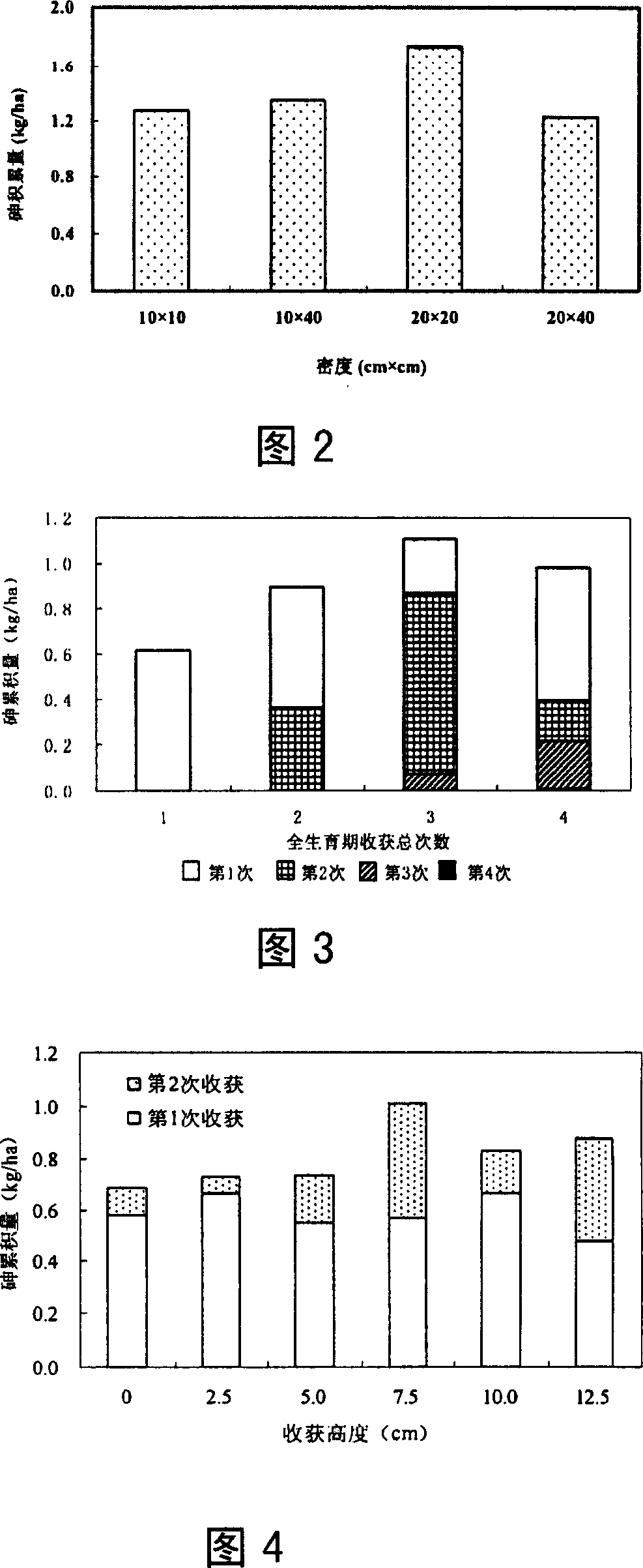Method for repairing soil polluted by arsenic by plant
A technology of phytoremediation and arsenic pollution, which is applied in the field of remediation of contaminated soil, can solve the problems such as the growth of centipede grass and the unclear impact of arsenic accumulation, and achieve the effects of no secondary pollution, low maintenance cost, and low management technical requirements
- Summary
- Abstract
- Description
- Claims
- Application Information
AI Technical Summary
Problems solved by technology
Method used
Image
Examples
Embodiment 1
[0023] In arsenic-contaminated farmland, according to the method shown in Figure 1, the spores of Centipede grass are sown in a specific area, and more than 100 Centipede grass can be grown per square meter (area occupied by the surface ditch); if the spores are directly sprinkled on the land surface, then The ratio of germination and fertilization is very low, and it is difficult to grow into centipede grass plants.
Embodiment 2
[0025] Get the centipede grass seedling (10~15cm height) among the embodiment 1 and transplant, its planting density is set as 10 * 10cm, 10 * 40cm, 20 * 20cm; 20 * 40cm, manage according to the management method of common crops, Centipede grass is harvested once during the whole growth period. It can be seen from Figure 2 that when the planting density is 20×20 cm, the total arsenic accumulation of Centipede grass is the highest (1.74 kg / ha), so the planting density of 20×20 cm is beneficial to improve the removal efficiency of Centipede grass for arsenic. With a planting density of 10×40 cm, the accumulation of arsenic is also high. Considering the convenience of field operations, the planting density of 10×40 cm is also a recommended solution.
Embodiment 3
[0027] Centipede grass planting and management method are the same as embodiment 2. Four treatments were set up in this experiment: cutting once (10 months after transplanting); cutting twice (harvest time was 5 months and 10 months after transplanting); cutting three times (harvest time was 4 months, 8 months and 10 months after transplanting); cutting 4 times (harvest time is respectively 4 months, 6 months, 8 months and 10 months after transplanting). After each sampling, the stubble height on the upper part of the centipede meadow was 5cm. It can be seen from Figure 3 that the order of the total arsenic accumulation in Centipede grass is: mowing 3 times > mowing 4 times > mowing 2 times > mowing 1 time, and the total arsenic accumulation of mowing 3 times is 1.9 times the total accumulation of arsenic at one time. This shows that multiple harvests are better than harvesting only once during the whole growth period, and multiple harvests can effectively avoid the relative...
PUM
 Login to View More
Login to View More Abstract
Description
Claims
Application Information
 Login to View More
Login to View More - R&D
- Intellectual Property
- Life Sciences
- Materials
- Tech Scout
- Unparalleled Data Quality
- Higher Quality Content
- 60% Fewer Hallucinations
Browse by: Latest US Patents, China's latest patents, Technical Efficacy Thesaurus, Application Domain, Technology Topic, Popular Technical Reports.
© 2025 PatSnap. All rights reserved.Legal|Privacy policy|Modern Slavery Act Transparency Statement|Sitemap|About US| Contact US: help@patsnap.com


